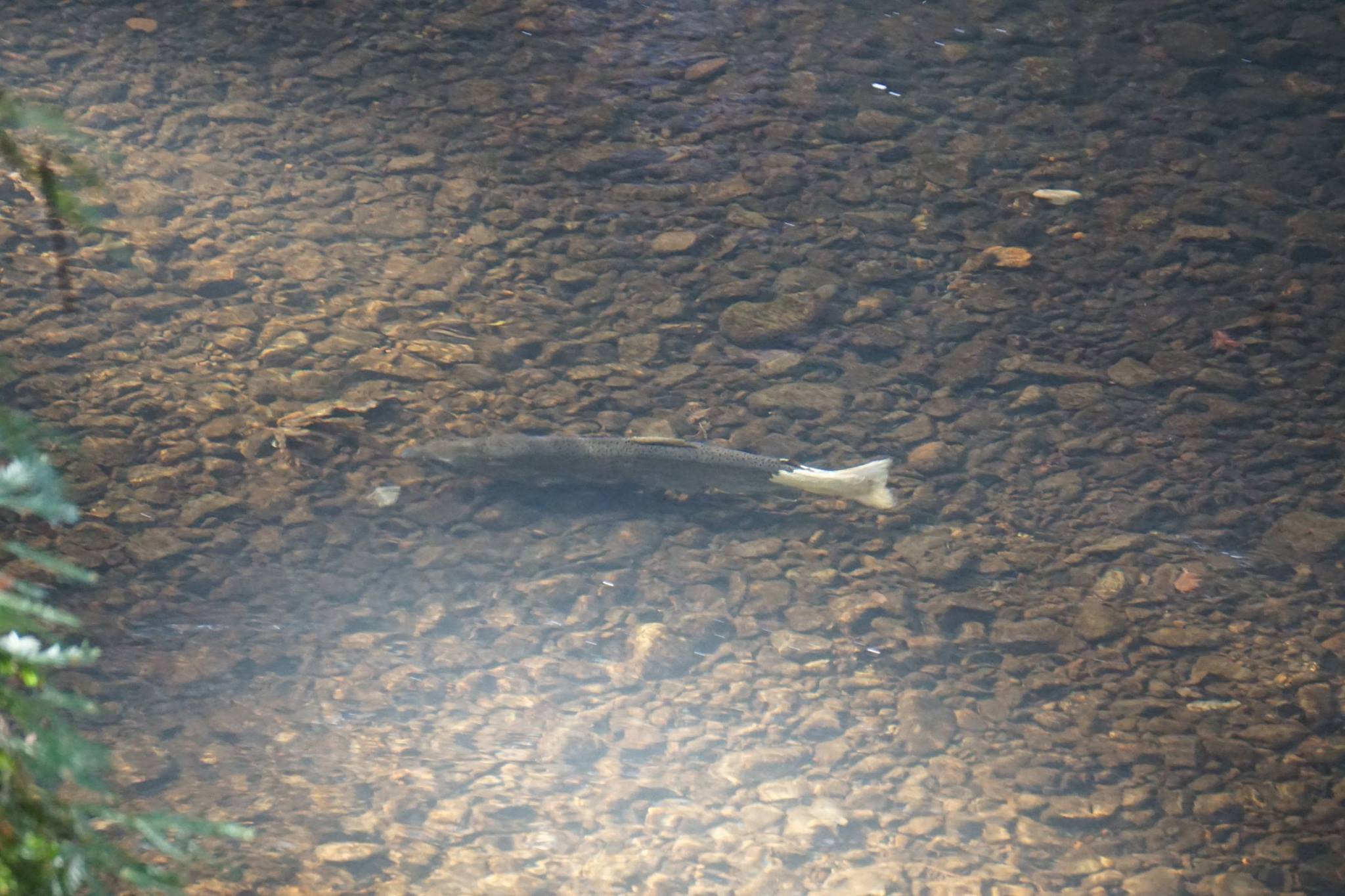
This graph includes coho spawning redd (nest) data collected in Lagunitas Creek from 1995 through 2019. Each point on the graph represents the 3-year geometric mean (annual average number of redds recorded for three consecutive annual cohorts). Using the geometric mean gives an estimate of the total population of this species because coho salmon have a rigid three-year birth to death life cycle. The 2019-20 count to date is 46 (black square), but is anticipated to increase slightly before the spawning season ends to approximately 50 redds.
For Immediate Release
January 10, 2020
Contacts:
Todd Steiner, tsteiner@seaturtles.org, 415-488-7652
Preston Brown, preston@seaturtles.org, 303-877-0880
Ayano Hayes, ahayes@seaturtles.org, 916-216-8355
California’s Coho Salmon Spawning Numbers Plummet
Marin County Spawning Population Lowest in a Decade
OLEMA, Calif. — As this year’s spawning season for Marin County’s coho salmon comes to an end, biologists are reporting some of the worst spawning numbers in nearly a quarter century.
Only a total of 44 nests (called redds) were reported so far for Lagunitas Creek, San Geronimo Creek, Woodacre Creek and Arroyo Creek. This is despite above average rains that have allowed salmon to migrate upstream unencumbered, and excellent conditions for monitoring the population. While a few more nests may be recorded before the season ends in the next couple of weeks, few if any un-spawned fish have been seen in recent surveys.
Marin Municipal Water District reported on Jan. 8 that the most recent survey documented only five coho and two new redds in Lagunitas Creek, San Geronimo Creek, and Devil’s Gulch in the last week. The average for this time of year is about 50 coho and 20 new redds per week.
“We have only seen evidence of three redds in all of the San Geronimo tributaries this year, barely bringing up the numbers reported so far by MMWD,” said Ayano Hayes, SPAWN’s watershed biologist.
Marin’s population of coho salmon is considered to be one of the strongest remaining in California and critical to the recovery of the species throughout Central California. Historic assessments of the Lagunitas Creek Watershed estimated the spawning population in the thousands.
“Even the bleak 250 average redds documented in the past 24 years of surveying is too low to provide the resiliency needed to balance good and bad years necessary for survival,” said Preston Brown, SPAWN’s watershed conservation director.
Since the listing of Central California Coast Coho salmon under the Endangered Species Act in 1996, their population has continued to dramatically decline and the fish are now considered close to extinction. The federal Coho Recovery Plan, prepared by the National Marine Fisheries Service, states that the population must maintain a [spawning] population of 2,600 fish over a 10-year period to be moved from its “Endangered” status to “Threatened” under the Endangered Species Act.
“We have a very long road ahead to ensure this species survival,” said Hayes.
Government agencies responsible for the recovery of coho salmon have recognized the importance of the Lagunitas population to overall efforts, making millions of dollars in state and federal grants available to recover the species here.
“We can certainly be proud of the excellent restoration projects completed in recent years in the Lagunitas Watershed by government agencies and SPAWN. Without these efforts, we might have no returning fish this year,” said Todd Steiner, biologist and executive director of SPAWN.
The Salmon Protection And Watershed Network (SPAWN) is a program of national marine conservation nonprofit Turtle Island Restoration Network. SPAWN protects endangered, wild Coho salmon and the forests and watersheds they need to survive in West Marin County, California.
###
Linked Documents & Resources:
Coho Recovery Plan – National Marine Fisheries Service
Graph – Coho Spawning Trends in Lagunitas Creek, Marin County




